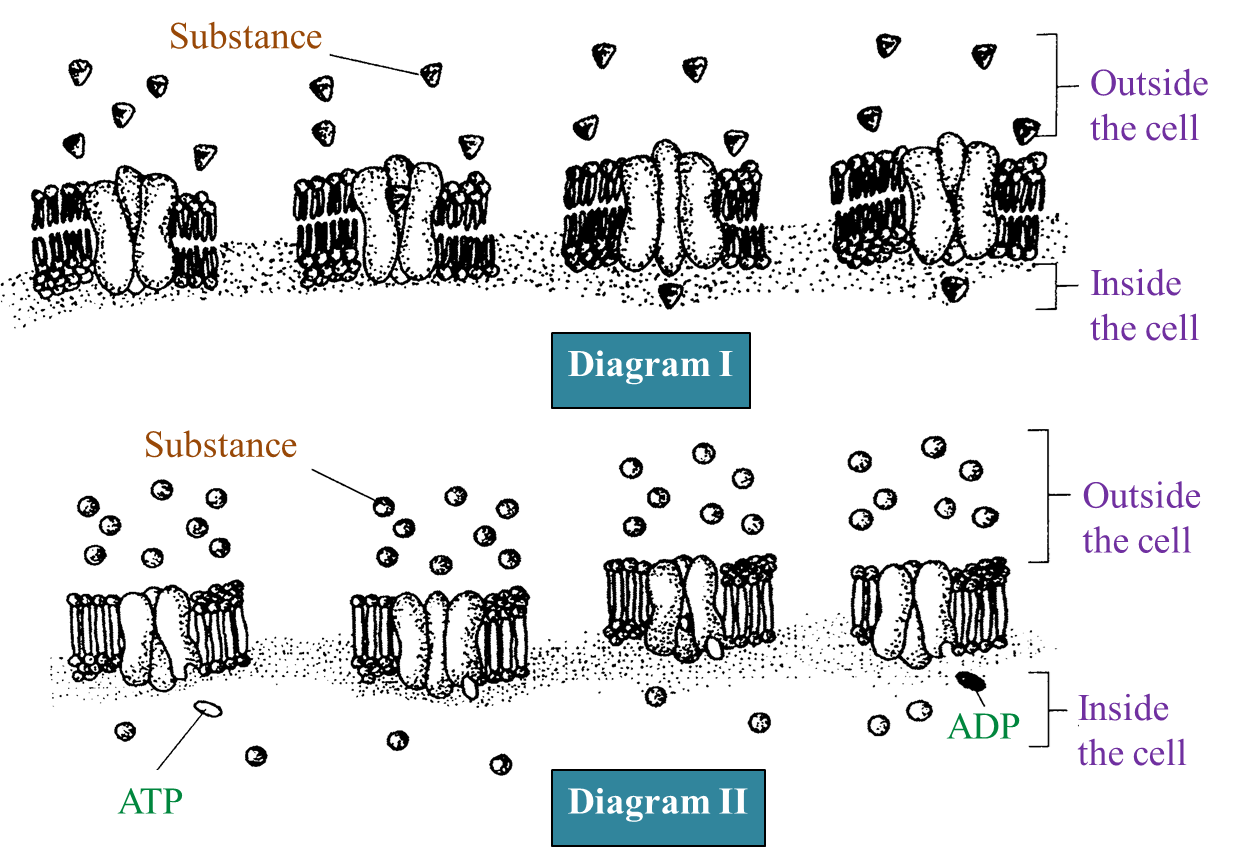Question 1:
Diagram I and Diagram II show two different types of movement of substances across the plasma membrane.
(b) State two characteristics of the phospholipid bilayer. [2 marks]
Answer:
(a)
(c)
Process in Diagram I – Facilitated diffusion
Process in Diagram II – Active transport
Diagram I and Diagram II show two different types of movement of substances across the plasma membrane.

(a) In Diagram I. label the following structures:
- Phospholipid bilayer, with letter R
- Carrier protein, with letter S [2 marks]
(b) State two characteristics of the phospholipid bilayer. [2 marks]
(c) Name the process of the movement of substances across the plasma membrane as shown in Diagram I and Diagram II. [2 marks]
(d)(i) Glucose molecules are transported across the plasma membrane into the cell through the process shown in Diagram I. Explain why. [2 marks]
(ii) If the substances in Diagram II are calcium ions, describe how they are transported into the cell. [4 marks]
Answer:
(a)

(b)
- It consists of hydrophilic heads and hydrophobic tails
- The hydrophilic heads are facing the exterior and the interior of the cell
- The bilayer is dynamic/ not static
(Choose any 2)
(c)
Process in Diagram I – Facilitated diffusion
Process in Diagram II – Active transport
(d)(i)
- Glucose consists of uncharged large sized molecules which cannot pass through the phospholipid bilayer.
- It needs a specific carrier protein to transport it across the phospholipid bilayer.
(d)(ii)
- By active transport – The movement of calcium ions is against the concentration gradient
- And it needs energy which is produced by cellular respiration ( in the form of ATP molecules)
- Carrier proteins bind with the calcium ions and change their shape, thus carrying the ions across the plasma membrane.